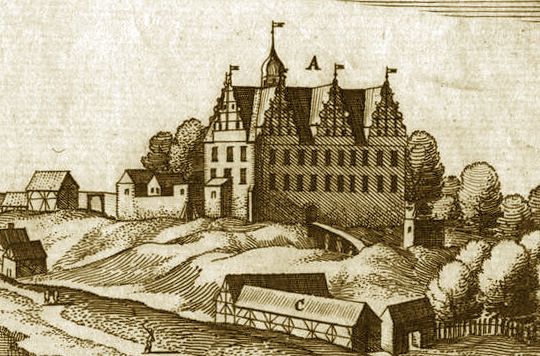Drawno on:
[Wikipedia]
[Google]
[Amazon]
Drawno () is a town in
 The territory became part of the emerging Polish state under its first ruler
The territory became part of the emerging Polish state under its first ruler
Dubie from Drawno 2009-08.jpg, Dubie Lake
Rudno lake 2009-08.jpg, Rudno Lake
Drawno spichlerz.jpg, Old granary, now a museum
Drawno zamek (3).jpg, Ruins of the Drawno Castle
Official town webpage
Jewish Community in Drawno
on Virtual Shtetl Cities and towns in West Pomeranian Voivodeship Choszczno County Populated lakeshore places in Poland {{Choszczno-geo-stub
Choszczno County
__NOTOC__
Choszczno County () is a unit of territorial administration and local government (powiat) in West Pomeranian Voivodeship, north-western Poland. It came into being on January 1, 1999, as a result of the Polish local government reforms pa ...
, West Pomeranian Voivodeship
West Pomeranian Voivodeship is a Voivodeships of Poland, voivodeship (province) in northwestern Poland. Its capital and largest city is Szczecin. Its area equals , and in 2021, it was inhabited by 1,682,003 people.
It was established on 1 Janua ...
, in north-western Poland, with 2,219 inhabitants as of December 2021. The headquarters of the Drawa National Park (''Drawieński Park Narodowy'') are located here.
History
 The territory became part of the emerging Polish state under its first ruler
The territory became part of the emerging Polish state under its first ruler Mieszko I
Mieszko I (; – 25 May 992) was Duchy of Poland (966–1025), Duke of Poland from 960 until his death in 992 and the founder of the first unified History of Poland, Polish state, the Civitas Schinesghe. A member of the Piast dynasty, he was t ...
around 967. In the 10th-11th centuries, using the suitable location between two lakes, a Slavic gród and a fishing village were established here. In different periods in the Middle Ages it was a part of Pomerania
Pomerania ( ; ; ; ) is a historical region on the southern shore of the Baltic Sea in Central Europe, split between Poland and Germany. The central and eastern part belongs to the West Pomeranian Voivodeship, West Pomeranian, Pomeranian Voivod ...
or Greater Poland
Greater Poland, often known by its Polish name Wielkopolska (; ), is a Polish Polish historical regions, historical region of west-central Poland. Its chief and largest city is Poznań followed by Kalisz, the oldest city in Poland.
The bound ...
. In the 13th century Drawno was part of the Duchy of Greater Poland
The Duchy of Greater Poland was a district principality in Greater Poland that was a fiefdom of the Kingdom of Poland. It was formed in 1138 from the territories of the Kingdom of Poland, following its fragmentation started by the testament of ...
, a province of fragmented Poland
Poland, officially the Republic of Poland, is a country in Central Europe. It extends from the Baltic Sea in the north to the Sudetes and Carpathian Mountains in the south, bordered by Lithuania and Russia to the northeast, Belarus and Ukrai ...
.
Town rights
Town privileges or borough rights were important features of European towns during most of the second millennium. The city law customary in Central Europe probably dates back to Italian models, which in turn were oriented towards the tradition ...
were granted between 1313 and 1333. From 1373 Drawno was part of the Lands of the Bohemian Crown
The Lands of the Bohemian Crown were the states in Central Europe during the Middle Ages, medieval and early modern periods with feudalism, feudal obligations to the List of Bohemian monarchs, Bohemian kings. The crown lands primarily consisted o ...
(or ''Czech Lands''), ruled by the Luxembourg dynasty. In 1402, the Luxembourgs reached an agreement with Poland
Poland, officially the Republic of Poland, is a country in Central Europe. It extends from the Baltic Sea in the north to the Sudetes and Carpathian Mountains in the south, bordered by Lithuania and Russia to the northeast, Belarus and Ukrai ...
in Kraków
, officially the Royal Capital City of Kraków, is the List of cities and towns in Poland, second-largest and one of the oldest cities in Poland. Situated on the Vistula River in Lesser Poland Voivodeship, the city has a population of 804,237 ...
. Poland was to buy and re-incorporate Drawno and its surroundings, but eventually the Luxembourgs sold the city to the Teutonic Order
The Teutonic Order is a religious order (Catholic), Catholic religious institution founded as a military order (religious society), military society in Acre, Israel, Acre, Kingdom of Jerusalem. The Order of Brothers of the German House of Sa ...
. During the Polish–Teutonic War (1431–35) Drawno rebelled against the Order to join Poland and recognized the Polish King as rightful ruler, but after the Peace of Brześć Kujawski
Peace is a state of harmony in the absence of hostility and violence, and everything that discusses achieving human welfare through justice and peaceful conditions. In a societal sense, peace is commonly used to mean a lack of conflict (such a ...
, the town, after receiving a guarantee of impunity for siding with Poland, returned to the rule of the Teutonic Knights, although, as it turned out, for a short time - only until 1454.
The medieval castle was rebuilt in Renaissance
The Renaissance ( , ) is a Periodization, period of history and a European cultural movement covering the 15th and 16th centuries. It marked the transition from the Middle Ages to modernity and was characterized by an effort to revive and sur ...
style around 1600, but later on it was destroyed in the 17th and 18th century wars.Józef Pilch, Stanisław Kowalski, ''Leksykon zabytków architektury Pomorza Zachodniego i ziemi lubuskiej'', Wydawnictwo ARKADY sp. z o.o., Warszawa, 2012 (in Polish)
Gallery
Notable residents
* Erich Rüdiger von Wedel (1892–1954), German World War I flying aceReferences
External links
Official town webpage
Jewish Community in Drawno
on Virtual Shtetl Cities and towns in West Pomeranian Voivodeship Choszczno County Populated lakeshore places in Poland {{Choszczno-geo-stub